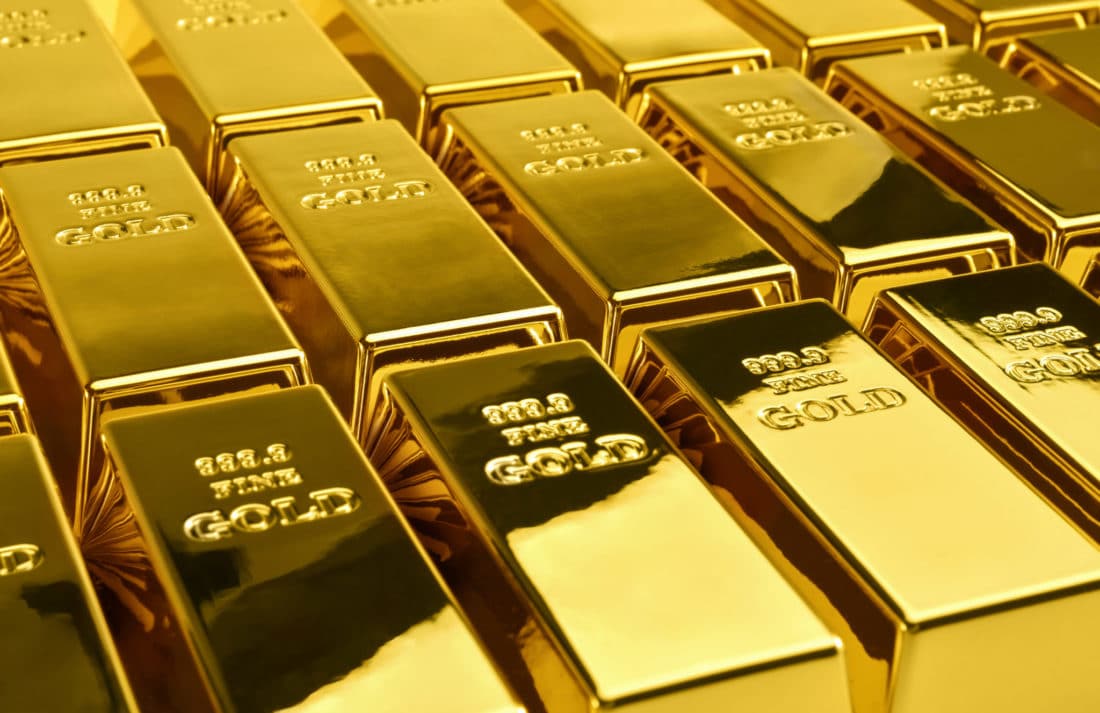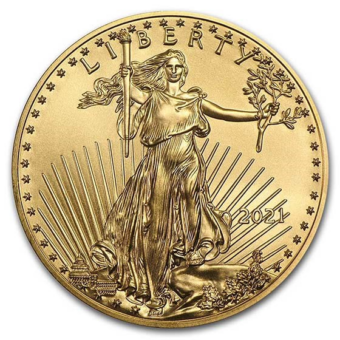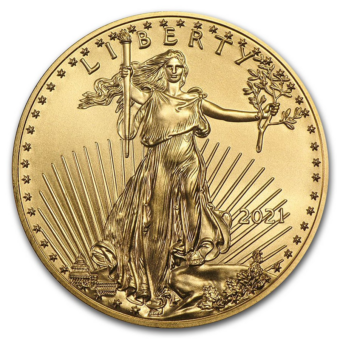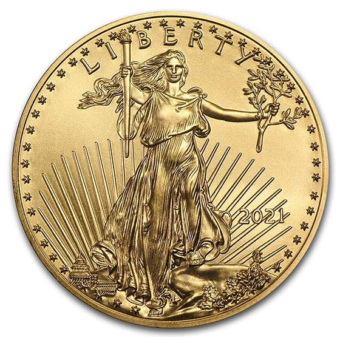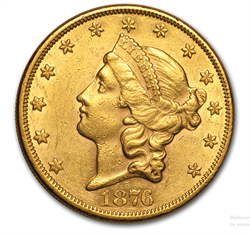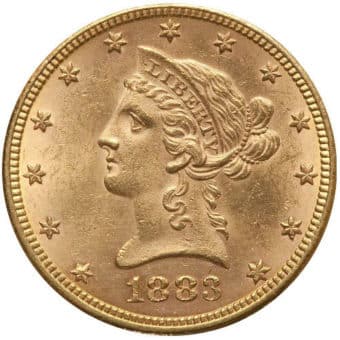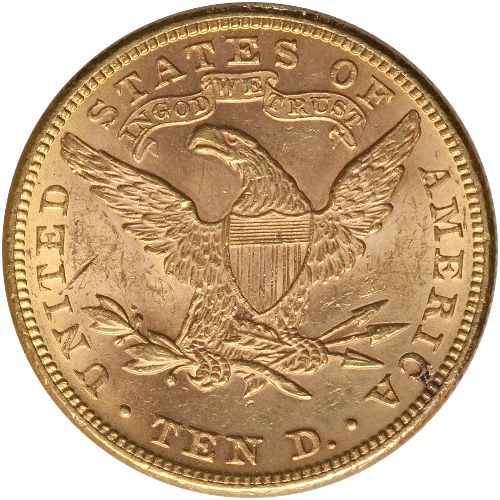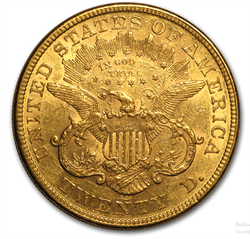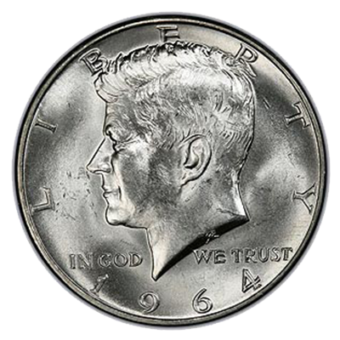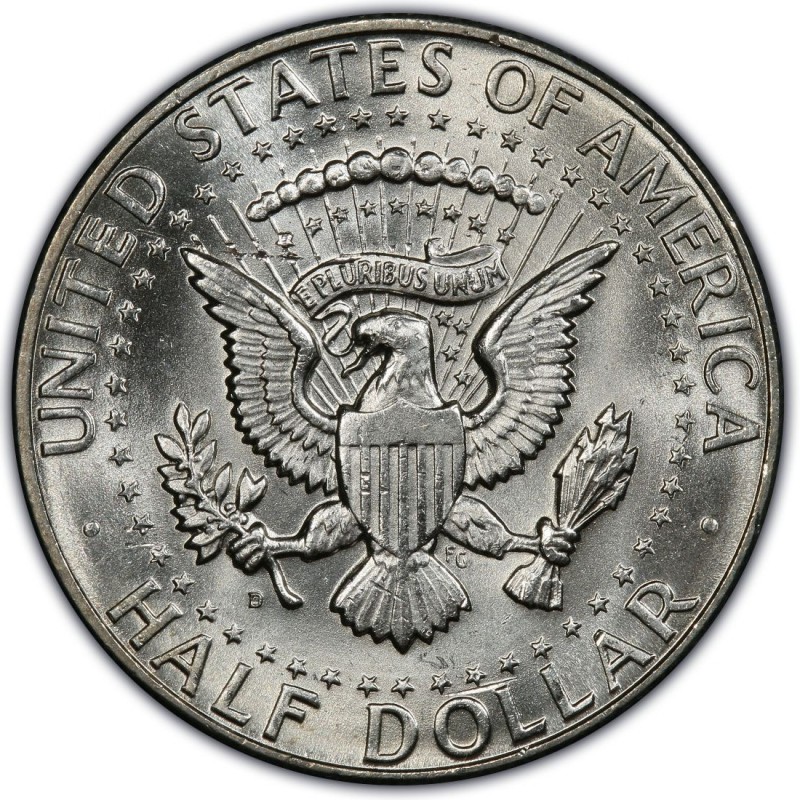Welcome to this week's edition of the Weekly Silver and Gold Rush newsletter. Are you ready for a comprehensive analysis of all the important gold and silver news you might have missed over this last week? The biggest financial event was probably the Fitch downgrade of the US credit rating. We explain the potential impacts this might have on precious metals in the near to intermediate term. But there’s more. Our coverage extends to platinum and silver demand in the hydrogen economy and solar industry. And what about the gold-silver ratio as a strategic investment tool? Stay informed, stay ahead - delve into this week's edition.
The Gold Trail: A Daily Journey Through the Week's Market
Monday - 7.31.23: Gold had a slow start to the week, remaining level at $1961.50 in sluggish summertime trading. Meanwhile, Silver saw a slight increase of 5¢, standing at $24.46. Over the course of the month, gold had increased by 2.6%, and silver experienced a more notable rise of 7.1%. Charlie Morris, a UK-based financial analyst, had offered an intriguing perspective on the strong demand for gold among central banks.
Tuesday - 8.01.23: Gold was down in the morning trade, primarily driven by a stronger dollar, dropping $10 to $1957. Silver also decreased by 29¢, sitting at $24.54. Despite the summer slowdown, Credit Swiss did not alter its bullish stance on the yellow metal. In an advisory released the previous day, the bank stated, " We still remain biased towards an eventual break to new record highs later in the year, which would then be seen to open the door to a move to $2,150 next, followed by $2,355/65."
Wednesday - 8.02.23: Gold saw a slight increase in early trade as markets responded to Fitch's downgrade of US debt from AAA to AA+. This downgrade, based on factors such as tax cuts, increased fiscal spending, economic shocks, and ongoing political stalemate, nudged gold up by $2 to $1949, while silver also rose by 3¢ to $24.40. This downgrade coincided with the Treasury Department's plans for a large debt issuance of $102 billion following this year's debt ceiling battle. Significant additions to the national debt were already made in June.
Thursday - 8.03..23: In early U.S. trading on Thursday, gold and silver prices modestly declined due to a surge in the U.S. dollar index and increasing U.S. Treasury yields. The market largely absorbed Fitch's unexpected U.S. government credit rating downgrade, attributed to persistent political partisanship. Concurrently, the Bank of England expectedly raised its main interest rate to 5.25%, while Eurozone inflation dropped in June with a 3.4% decrease in the year-on-year producer price index. The market awaits the July U.S. employment report, with an anticipated 200,000 job increase in non-farm payrolls.
Friday - 8.04.23: The gold market is attempting to maintain critical levels as the US labor market loses momentum in July, despite the persistence of inflationary pressures. According to the Bureau of Labor Statistics, US nonfarm payrolls increased by 187,000 last month, which was below market expectations of 205,000. However, the report also noted that the US unemployment rate improved more than expected, falling to 3.5% from 3.6% in June. Economists had anticipated that the reading would remain unchanged. The gold market has not shown much reaction to the disappointing headline numbers. December gold futures were last trading at $1,970 an ounce, roughly unchanged on the day.
TD Securities Predicts Record High for Gold Amid Economic Headwinds
TD Securities' Head of Commodity Strategy, Bart Melek, forecasts that gold prices will reach a record high of $2,100 per ounce by the end of 2023, despite current challenges. The prediction is in part based on the anticipation of a mean reversion in the market due to rising interest rates and the slowing of economic activity. The Federal Reserve's continued aggressive monetary policies, in response to sustained inflation and robust economic activity, have also been taken into account. The hawkish bias of the Federal Reserve has been suppressing gold prices. However, Melek believes that a shift in this bias won't require much effort, as incoming economic data just needs to fall short of market expectations. Market optimism may be nearing its peak, and the economic data is anticipated to weaken soon due to aggressive interest rate hikes by the Federal Reserve, thus driving bond yields and the U.S. dollar lower and supporting gold prices.
Bundesbank Contemplates Gold Revaluation Account to Offset Losses: A New Gold Standard on the Horizon?
In the face of substantial losses due to rising interest rates and unconventional monetary policies, the German Central Bank (Bundesbank) has publicly considered utilizing its gold revaluation account (GRA) to offset these losses. Joachim Wuermeling, a member of the bank's Executive Board, has endorsed the soundness of the bank's balance sheet, which is backed by the GRA. Notably, the Bundesbank's GRA stands at €176 billion, a substantial buffer that has grown due to the long-term appreciation of gold against fiat currencies. However, the use of a GRA to absorb losses is a contentious issue, as it contains unrealized gains and can be severely depleted if the gold price drops. Regardless, the Bundesbank seems willing to explore this option, potentially setting a precedent for other central banks worldwide and emphasizing the value of gold as a stable asset amid monetary volatility.
U.S. Credit Rating Slips Amid Fiscal Concerns: Fitch Downgrades to AA+
Fitch Ratings downgraded the United States' long-term foreign currency issuer default rating from AAA to AA+ due to concerns over the nation's fiscal management and growing debt burden. The rating agency had previously placed the U.S. on negative watch in May, attributing its concerns to the ongoing debt ceiling dispute in Washington. The downgrade announcement was followed by a dip in U.S. stock futures. Fitch also predicts a potential "mild" recession towards the end of 2023 and early 2024 due to a combination of tightening credit conditions, weaker business investment, and a slowdown in consumption. Despite the downgrade, the White House disputes Fitch's decision, arguing that the U.S. economy is currently exhibiting the strongest recovery of any major global economy.
The Fitch downgrade of the U.S. long-term rating could potentially fuel a surge in gold prices. Gold is often considered a safe haven investment during times of economic uncertainty, and a downgrade of a major economy like the U.S. may increase perceived risk and stimulate demand for this precious metal. If investors grow wary about the fiscal health of the United States and the potential for a mild recession, they could shift their investments from more volatile assets like stocks to more stable ones, such as gold. This heightened demand would likely drive up the price of gold. However, the extent to which gold prices are impacted will also depend on other global economic factors and investor sentiment at large.
U.S. Job Growth Steady but Slowing, Mixed Signals for Gold
The U.S. economy added 187,000 jobs in July, falling short of the predicted 205,000. This slowdown suggests potential cooling in the economy, with healthcare, social assistance, financial activities, and wholesale trade being the main sectors for job creation. Despite the slower job growth, the economy has remained resilient amid a series of 11 Federal Reserve interest rate hikes aiming to control inflation. Though a recession was forecasted, sustained consumer spending and a rebound in the service sector have kept growth positive.
Despite the slower job growth and a better-than-expected drop in the unemployment rate to 3.5%, gold prices remain largely unaffected, trading at around $1,970 an ounce. The gold market's lack of reaction is possibly due to the persistent concern of inflation that could compel the Federal Reserve to increase interest rates. Moreover, average hourly earnings rose more than anticipated, by 0.4% to $33.74. The reported mixed signals and downward revision in May and June's employment data continue to create uncertainty in the marketplace about the U.S. central bank's next moves. Future inflation data and trends in oil prices are expected to be significant for market sentiment in the upcoming weeks.
Gold Prices Waver Amid Slowing U.S. Service Sector and Stable Job Market
Despite a slowdown in the U.S. service sector and a stable labor market, gold prices are struggling to maintain key support levels. The Institute for Supply Management's (ISM) Services Purchasing Managers Index recently dropped to 52.7% from the previous month's 53.9%, signifying a deceleration in the sector's growth rate. Concurrently, gold prices remain under pressure, with December gold prices trading at $1,971 an ounce, a 0.20% decrease on the day. Despite robust economic growth in the first half of 2023, the latest data reveals continued uncertainty, with gold's resistance at the $1,970 level being a crucial indicator of future price movements. Meanwhile, the U.S. labor market shows healthy momentum with only a slight increase in weekly jobless claims to 227,000, indicating relative stability in the labor sector. However, this data has so far failed to significantly influence gold prices.
The Platinum Rush: Expanding Hydrogen Economy and Its Impact on Platinum Demand
The expanding hydrogen economy, especially the push for green hydrogen, is anticipated to fuel an increase in platinum demand, according to a report by Commerzbank Research. The report suggests that platinum demand for hydrogen production is set to surge from 48,000 ounces last year to 2.7 million ounces by 2030, accounting for up to one-third of total platinum demand by the end of the 2030s. Despite this bullish outlook, platinum prices are currently testing support just above $900 an ounce. As more countries, like Germany and the U.S., ramp up their green hydrogen initiatives, platinum's role is set to grow given its utilization in green hydrogen production and fuel cells. However, the report cautions that existing platinum resources must be used efficiently due to likely shortfalls in investments for new mines, particularly in South Africa, the largest producer. As a solution, the report highlights the potential of recycling, currently accounting for almost a quarter of global platinum supply, with considerable savings seen in recycling platinum from scrapped vehicles.
Rising Solar Demand and Its Implications for Silver
Industrial demand for silver has seen a steady increase over the past decade, and it is expected to keep growing, according to a report by Metals Focus analysts. The report indicates that industrial consumption now accounts for around 50% of total demand, primarily driven by the burgeoning electronics and electric applications sectors. Moreover, record highs in silver industrial fabrication, driven by green energy applications like photovoltaics (PV) and electric vehicles (EV), have been observed, with volumes in 2022 up by 16% from 2010. This increase is anticipated to create a structural deficit in the silver market. Silver paste, a significant cost component in PV manufacturing, is under pressure due to increases in installed PV capacity. While attempts are being made to decrease silver usage or substitute it, adoption rates of alternative metals remain low due to high production line costs. The report also warns that if silver prices exceed $30 per ounce, it could put pressure on manufacturers as most remain profitable when silver trades below $25 per ounce. Despite these challenges, the report maintains a bright long-term demand outlook for silver, primarily due to its cost-effectiveness in industrial conductive applications and the continuous support for green energy technologies.
Decoding the Gold-Silver Ratio: An Investment Strategy
When new to investing in precious metals, many people find it challenging to decide between gold and silver. A common metric used to guide this decision is the gold-silver ratio, essentially how many ounces of silver equals one ounce of gold. As of August 2023, the current gold-silver ratio stands at 80.
Investors use this ratio to gauge the optimal time to buy either metal and when to switch investments from one to the other. Some view a 60:1 silver to gold ratio as indicating fair value or equilibrium between the metals.
Silver, though often overlooked in favor of gold due to storage issues, plays a significant role, especially considering its industrial usage over the past decade. The natural gold-silver ratio is about 16:1, reflecting the relative abundance of the metals in the Earth's crust.
Investors are, however, cautioned against relying solely on the spot prices of metals. For instance, a Silver Britannia coin often trades at a value above the intrinsic metal worth, with the premium rising during periods of high silver demand.
Historically, when the gold-silver ratio is over 80, investors are advised to buy silver. As the ratio decreases, a mix of gold and silver becomes optimal, with a ratio below 50 indicating a preference for gold. These trends suggest that in a bull market, silver investments might yield higher returns than gold.
In the early 2000s, gold initially outperformed silver, but silver quickly overtook gold in terms of percentage gains. While some experts predict a return to the 45:1 ratio seen in 2011, investors are cautioned that such an event might trigger a rush to sell, potentially flooding the market with silver bars and coins. Regardless, the gold-silver ratio remains a useful tool for investors deciding between silver coins or gold bullion.
Next Week’s Key Events
Monday, August 7th at 3:00 pm ET, the Consumer Credit report for June will be released. This report is significant as it provides information about borrowing activity and consumer spending trends. Higher consumer credit suggests stronger consumer spending, which can lead to increased economic activity and potentially higher inflation. Higher inflation can be positive for precious metals like gold and silver, as they are often seen as hedges against inflation.
Tuesday, August 8th at 6:00 am ET, the NFIB Optimism Index for July will be published. This report measures the sentiment of small businesses in the United States. If the index shows an increase in optimism, it could signify that businesses expect better economic conditions, potentially leading to an increase in the value of the U.S. dollar. A stronger dollar can negatively impact precious metals prices, as they tend to have an inverse relationship.
Wednesday, August 9th, there are no scheduled reports..
Thursday, August 10th, there will be two reports. At 8:30 am ET, the Initial Jobless Claims for the week ending on August 5th will be released. If jobless claims are lower than expected, it could suggest a strengthening job market, boosting the economy and the U.S. dollar, and potentially pressuring precious metals prices. On the same day and time, the Consumer Price Index (CPI) for July will also be disclosed. The CPI is a key inflation indicator. Higher-than-expected inflation could boost precious metals, as they are often used as a hedge against inflation.
Finally, on Friday, August 11th, there will be two reports as well. At 8:30 am ET, the Producer Price Index (PPI) for July will be presented. The PPI measures inflation at the wholesale level. Higher PPI may indicate increasing inflation, which could potentially benefit precious metals. Then, at 10:00 am ET, the preliminary Consumer Sentiment for August will be shared. This indicator assesses the consumer confidence in the economic activity. Increased consumer confidence can lead to more robust economic growth, which might lead to a stronger dollar and potentially weigh on precious metals.


